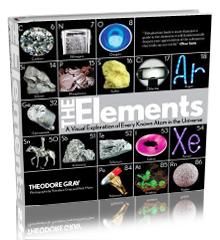Pyritized Ammonite | |||
| Sample Image | Spin Video | QuickTimeVR Rotation | |||
| Pyritized Ammonite. A fossil is the impression left when the body of an ancient animal or plant is encased in some kind of mud or sand, which turns into rock over great expanses of time. After the matrix around the object has become firm enough to hold its shape, the object itself is slowly replaced by some other mineral that works its way in from the surrounding matrix. If all goes well, the rock or mineral formed where the body used to be is different enough from the surrounding rock or mineral that it's possible to separate them and rediscover the original shape of the object. (If it doesn't go well, either there's no fossil formed, or it's one that is so subtle you just don't notice it.) A fossil can be formed out of all kinds of different minerals, so there are really two entirely separate ways to describe one: What it's a remnant of, and what it's made out of. This sample is a fossil of a type of animal called an Ammonite, but even more interestingly, it happens to be made of pyrite (iron sulfide), also known as "fool's gold" because it looks a lot like gold. Imagine that: An animal shape recreated in shiny gold crystals, and it's an entirely natural process. Amazing. Technical details: This is a Pleurocerus Ammonite from the Jurassic age, found in Nuremburg, Germany. Source: indiana9 Fossils Contributor: Theodore Gray Acquired: 29 March, 2003 Price: $15 Size: 1.5" Composition: FeS2 | |||
|

